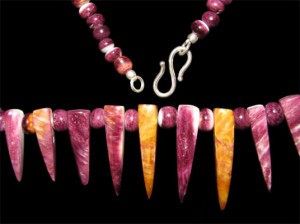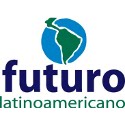Why investigate Spondylus?
We are currently investigating the ecology and population dynamics of the bivalve genus Spondylus, also known as “spiny oysters”. The shells are famous for their beauty among collectors worldwide. Visitors of Ecuador have surely seen the amazing shells, either found clean and polished entirely or the beautiful jewellery that is made out of it, both found widely distributed in shops and on local markets. Very few visitors are probably aware that these slow-growing animals faced a heavy fishery pressure during the last decade and are nowadays a more and more disappearing resource. The fishery on Spondylus is still not regulated and consequently stocks appear to be severely overexploited. A detailed study of the ecology and population dynamics of Spondylus species is therefore urgently required to provide the information necessary for a sustainable management and thus protection of this ecologically and economically valuable resource.
History
Belonging to the class of Bivalvia, the family Spondylidae (Gray, 1826) consists of only one genus: Spondylus (Linnaeus, 1758) with current estimates of different living species between 70 and 80, many of them under scientific revision. This family is closely related to the family Pectinidae (Scallops) with whom they share the complex eyes around the mantle and a relatively well developed nervous system. Spondylus is usually cemented to the substrate instead of using a byssus. Despite their abundance in the tropical oceans of the world, very little is known about basic biology and ecology of Spondylidae.
Three species are found along the coast of Ecuador, Spondylus calcifer, S. princeps and S. leucacanthus. Their large and magnificent shells have a long history in South American culture as ceremonial offerings and currency. A lively community of anthropologists is exploring and discussing the importance that Spondylus featured in South America during Valdivian and Incan times. Nowadays, Spondylus is again of significant commercial value in Ecuador regarding handicraft (jewellery) and alimentation.
Further investigations
We are also investigating the suitability of Spondylus shells as archives of long-term environmental variability. As in many bivalves, Spondylus shells display growth rings that are formed due to changes in environmental parameters such as water temperature, salinity, depth and light which influence the availability of food and therefore the metabolism and the growth of the animal. Owing to the presumed longevity of Spondylus, their shells may serve as archives of long-term environmental variability, i.e. its morphological and biogeochemical properties may reflect the influence of large-scale climate phenomena like ENSO (El Niño Southern Oscillation). The eastern tropical pacific is a key climate sector and calcifying marine organisms such as bivalves can provide high-resolution records of environmental parameters.

More Information:
Alfred Wegener Institute for Polar and Marine Research















